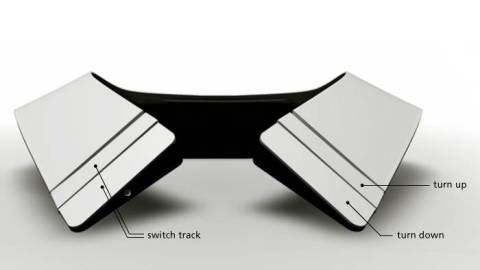Music for the Deaf

A few weeks ago, we looked at how designers were revolutionizing sight for the vision-impaired. Today, we focus on another kind of sensory disability — can design make deaf people hear music?
Previous efforts in this direction have taken the obvious approach — leveraging one of the other senses to capture and compensate for what is being lost in the auditory, such as the use of infrared light to stimulate neurons in the inner ear with the same precision that sound does. Highly technical and science-intensive, these efforts have been born out of academic research labs rather than design studios. But now, designers are stepping up to the challenge.

A new concept device from German industrial designer Frederik Podzuweit aims to battle the commonly held belief that deaf people can’t enjoy music. Plainly yet appropriately titled Music for Deaf People, the collar-like device uses electricity to make a special membrane substance pulsate, syncing these vibrations to the soundwaves and transmitting them to the user’s neck, shoulders and collarbone in a way that makes the music literally palpable.


The device is customizable to fit different neck sizes via an expandable back slider. Much like an iPod remote, it features volume and scroll controls and, like a speaker system, utilizes a spatial distinction between bass, mid-range and treble.


While the device is merely a concept, it represents an interesting direction of exploration for design. And to take it a step beyond sensory disability, such synesthetic enhancers will likely have an increasingly important role in our lives as multiplatform entertainment continues to proliferate and we’re immersed in more and more sensory media every day.
Maria Popova is the editor of Brain Pickings, a curated inventory of miscellaneous interestingness. She writes for Wired UK, GOOD Magazine and Huffington Post, and spends a shameful amount of time on Twitter.





